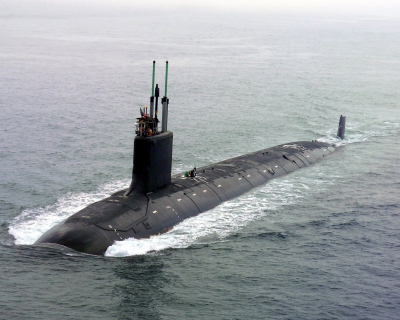Australian Hospital Ship (AHS) Centaur was a hospital ship which was attacked and sunk by a Japanese submarine off the coast of Queensland, Australia, on 14 May 1943. Of the 332 medical personnel and civilian crew aboard, 268 died, including 63 of the 65 army personnel.
The Scottish-built vessel was launched in 1924 as a combination passenger liner and refrigerated cargo ship and operated a trade route between Western Australia and Singapore via the Dutch East Indies (now Indonesia), carrying passengers, cargo, and livestock. At the start of World War II, Centaur (like all British Merchant Navy vessels) was placed under British Admiralty control, but after being fitted with defensive equipment, was allowed to continue normal operations. In November 1941, the ship rescued German survivors of the engagement between Kormoran and HMAS Sydney. Centaur was relocated to Australia's east coast in October 1942, and used to transport materiel to New Guinea.
In January 1943, Centaur was handed over to the Australian military for conversion to a hospital ship, as her small size made her suitable for operating in Maritime Southeast Asia. The refit (including installation of medical facilities and repainting with Red Cross markings) was completed in March, and the ship undertook a trial voyage: transporting wounded from Townsville to Brisbane, then from Port Moresby to Brisbane. After replenishing in Sydney, Centaur embarked the 2/12th Field Ambulance for transport to New Guinea, and sailed on 12 May. Before dawn on 14 May 1943, during her second voyage, Centaur was torpedoed and sunk by a Japanese submarine off Moreton Island, Queensland. The majority of the 332 aboard died in the attack; the 64 survivors were discovered 36 hours later. The incident resulted in public outrage as attacking a hospital ship is considered a war crime under the 1907 Hague Convention. Protests were made by the Australian and British governments to Japan and efforts were made to discover the people responsible so they could be tried at a war crimes tribunal. In the 1970s the probable identity of the attacking submarine, I-177, became public.
The reason for the attack is unknown; there are theories that Centaur was in breach of the international conventions that should have protected her, that I-177's commander was unaware that Centaur was a hospital ship, or that the submarine commander, Hajime Nakagawa, knowingly attacked a protected vessel. The wreck of Centaur was found on 20 December 2009; a claimed discovery in 1995 has been proven to be a different shipwreck.
A submarine (or sub) is a watercraft capable of independent operation underwater. It differs from a submersible, which has more limited underwater capability. The term is also sometimes used historically or colloquially to refer to remotely operated vehicles and robots, as well as medium-sized or smaller vessels, such as the midget submarine and the wet sub. Submarines are referred to as "boats" rather than "ships" irrespective of their size.Although experimental submarines had been built earlier, submarine design took off during the 19th century, and they were adopted by several navies. They were first widely used during World War I (1914–1918), and are now used in many navies, large and small. Military uses include attacking enemy surface ships (merchant and military) or other submarines, and for aircraft carrier protection, blockade running, nuclear deterrence, reconnaissance, conventional land attack (for example, using a cruise missile), and covert insertion of special forces. Civilian uses include marine science, salvage, exploration, and facility inspection and maintenance. Submarines can also be modified for specialized functions such as search-and-rescue missions and undersea cable repair. They are also used in tourism and undersea archaeology. Modern deep-diving submarines derive from the bathyscaphe, which evolved from the diving bell.
Most large submarines consist of a cylindrical body with hemispherical (or conical) ends and a vertical structure, usually located amidships, that houses communications and sensing devices as well as periscopes. In modern submarines, this structure is the "sail" in American usage and "fin" in European usage. A "conning tower" was a feature of earlier designs: a separate pressure hull above the main body of the boat that allowed the use of shorter periscopes. There is a propeller (or pump jet) at the rear, and various hydrodynamic control fins. Smaller, deep-diving, and specialty submarines may deviate significantly from this traditional design. Submarines dive and resurface by means of diving planes and changing the amount of water and air in ballast tanks to affect their buoyancy.
Submarines have one of the widest ranges of types and capabilities of any vessel. They range from small autonomous examples and one- or two-person subs that operate for a few hours, to vessels that can remain submerged for six months—such as the Russian Typhoon class, the biggest submarines ever built. Submarines can work at greater depths than are survivable or practical for human divers.

1943May, 14
World War II: A Japanese submarine sinks AHS Centaur off the coast of Queensland.
Choose Another Date
Events on 1943
- 11Feb
Dwight D. Eisenhower
World War II: General Dwight D. Eisenhower is selected to command the allied armies in Europe. - 30May
Auschwitz concentration camp
The Holocaust: Josef Mengele becomes chief medical officer of the Zigeunerfamilienlager (Romani family camp) at Auschwitz concentration camp. - 19Jun
Pittsburgh Steelers
The Philadelphia Eagles and Pittsburgh Steelers in the NFL merge for one season due to player shortages caused by World War II. - 6Nov
Kiev
World War II: The Soviet Red Army recaptures Kiev. Before withdrawing, the Germans destroy most of the city's ancient buildings. - 4Dec
Josip Broz Tito
World War II: In Yugoslavia, resistance leader Marshal Josip Broz Tito proclaims a provisional democratic Yugoslav government in-exile.

 English
English  español
español  français
français  português
português  русский
русский  العربية
العربية  简体中文
简体中文 